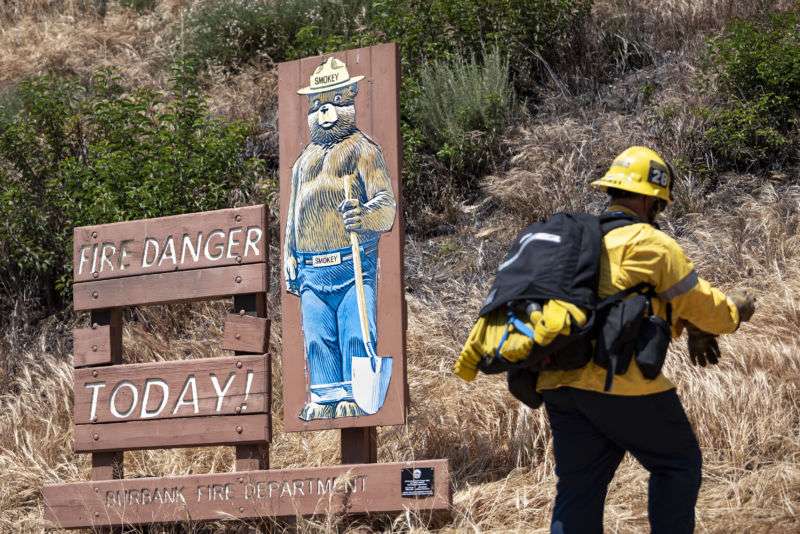
As summer heats up, Calif. utility starts cutting power to prevent wildfires

This weekend, one of California’s largest utilities—Pacific Gas and Electric (PG&E)—elected to shut off power to customers in two counties as part of its newly-expanded “Public Safety Power Shutoff” plan.
The plan was approved by California regulators in May as a way to minimize the risk of wildfire in Northern California. As climate change has made summers hotter and winter rain more unpredictable, PG&E’s power lines sparked dangerous and destructive fires 2017 and 2018. In recent years, California fires caused by power lines have burned millions of acres of land, razing homes and towns, and killing residents who couldn’t evacuate quickly enough.
In order to combat these fires, PG&E is proactively shutting down both distribution and transmissions lines when conditions are dangerous enough. This weekend, hot, windy weather with low humidity resulted in power outages for 20,500 residents of Butte and Yuba counties, just west of the Tahoe and Plumas National Forests.
When lines are proactively shut down, they must be inspected before they can be reenergized, according to a Sunday press release from PG&E.
“Approximately 260 personnel must inspect approximately 800 miles of transmission and distribution lines as part of the restoration process, the equivalent distance from San Francisco to Seattle, Wash.,” PG&E wrote. The utility continued:
While customers in high fire-threat areas are more likely to be affected by a PSPS [Public Safety Power Shutoff], any of PG&E’s more than 5 million electric customers could have their power shut off because the energy system relies on power lines working together to provide electricity across cities, counties, and regions.
Shutting off power to customers to prevent a wildfire comes as PG&E moves through chapter 11 bankruptcy proceedings, brought on by the billions of dollars that the utility will likely owe due to its infrastructure causing some of the most deadline wildfires in California’s history. In May, Cal Fire investigators found that PG&E transmission lines were responsible for the 2018 Camp Fire that killed more than 80 people.
A number of brush fires started over the weekend as the Golden State experienced hot weather and low humidity. Although the state had a wet winter, wet winters can exacerbate wildfires in California if vegetation grows faster than normal and then extremely hot summer temperatures dry that overgrown vegetation out.
Though cutting off power to communities to prevent wildfires may be a practical way to address fire risk across a wide geography, turning off power to communities for days or even weeks is extremely problematic, especially for the elderly and people who rely on electricity to live. (The Associated Press points to Californians who need to keep their insulin refrigerated.)
State governor Gavin Newsom has called for the state to spend $75 million to prepare those who are vulnerable during power outages. Other communities have floating building microgrids to see residences and businesses through power outages.




